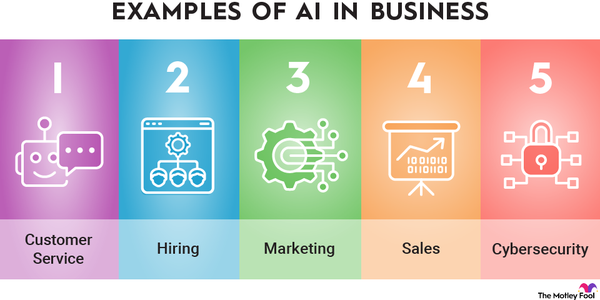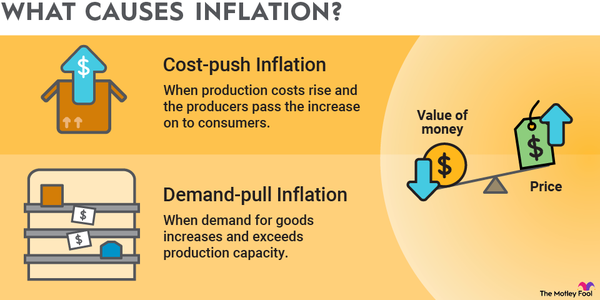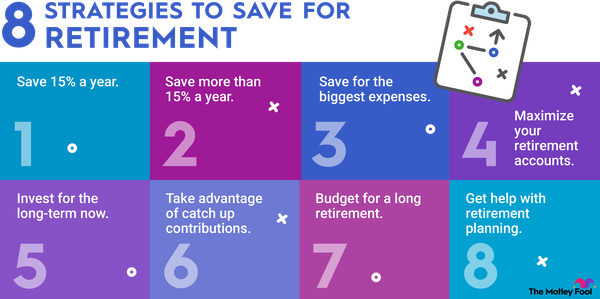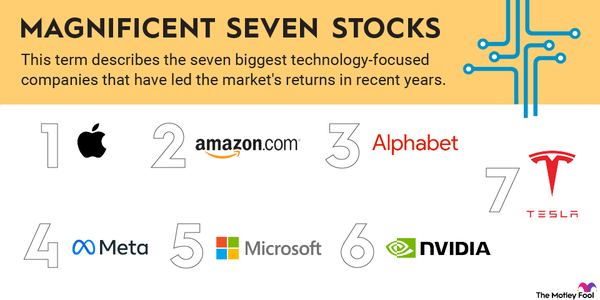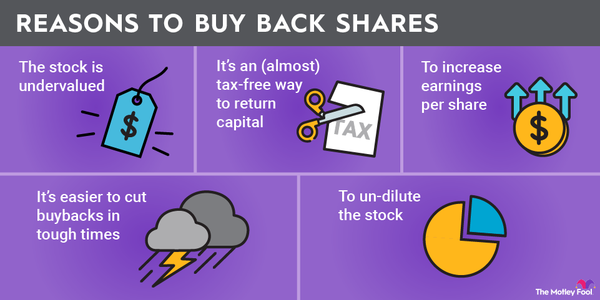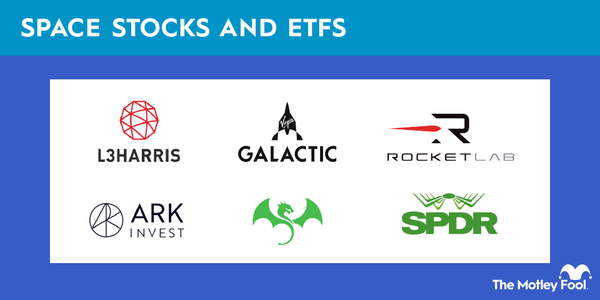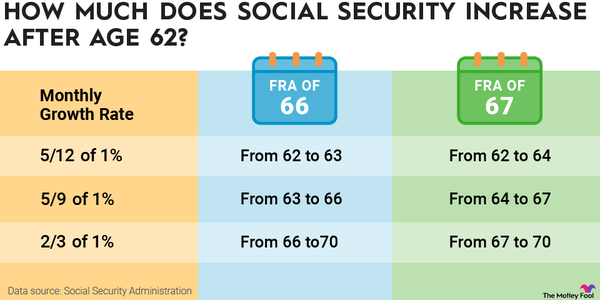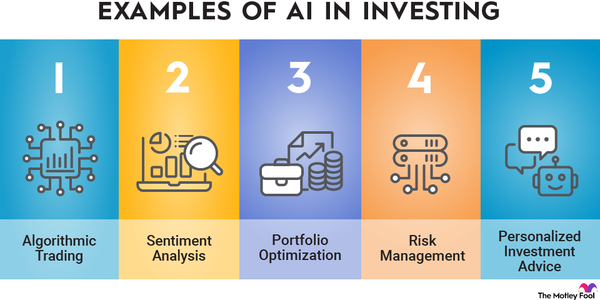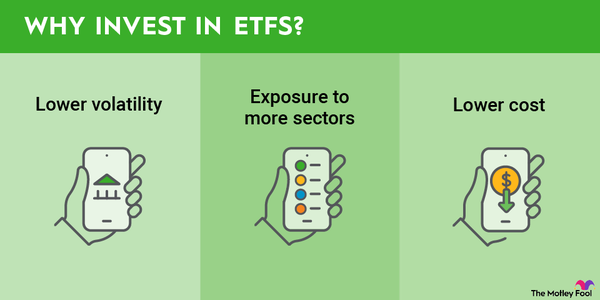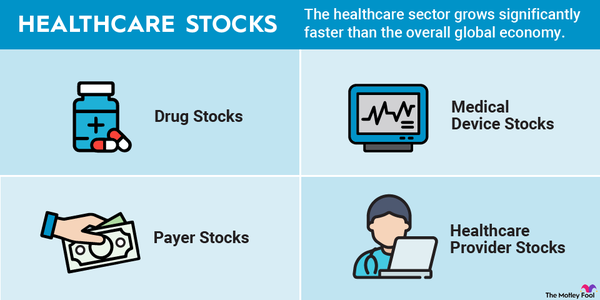Investing in stocks is one of the best ways to build long-term wealth and financial freedom. But succeeding in the stock market requires an understanding of investing basics and how to make the most of the investing process.
And while we do our best to educate as many people as possible, we also know that more than half of Americans own stocks -- and not everyone is investing with the help of The Motley Fool.
So we wanted to know: how much does the average American know about the basics of investing?

Overall, respondents didn't fare too well. The average American got just 48% of questions right (that's about 5 right out of 11 questions). But there were a few results that gave us hope. Let's take a look at the specifics.
Key findings
- Most Americans don't have a solid understanding of investing basics. The average American only got 48% of questions correct in our quiz on investing terms and basic concepts. Less than 1% answered all of the questions correctly.
- The most confident respondents didn't score the highest. Those who rated their knowledge as five out of five scored lower than those who rated their knowledge as three or four out of five. This may indicate a level of overconfidence.
- 60% of respondents understand that buying a share of stock represents ownership of a company. Fewer people understand what shares of an index fund (26%) or a mutual fund (34%) represent.
- Most respondents (71%) understand that risk comes with reward. However, they're less sure about how to mitigate that risk through diversification or a buy-and-hold strategy.
- More than half of Americans understand compound interest, at least conceptually. 55% picked the right definition and the same number also correctly interpreted a more practical example.
Could you pass Investing 101? Take the investing basics quiz
About a third of Americans have taken a personal finance class
Respondents were asked if they had taken a personal finance class and at what level. A personal finance class might be someone's first exposure to basic investing principles, so it's important to understand the financial education of our respondents (at least in a formal sense).
35% of Americans had taken a personal finance class, while 65% had not. Most of those who had taken a class took it in college. (It's worth noting that research shows fewer than 60% of Americans being financially literate.)
Basic financial education goes beyond how to create a profitable portfolio. It includes issues like saving, planning for retirement, credit scores, setting financial goals, managing household debt, building financial habits, and how to think about more complicated assets like real estate.
As we'll see, respondents who had taken a personal finance class scored better on our quiz than those who hadn't.
Americans aren't great with basic investing knowledge, but there are some bright spots
Overall, Americans didn't fare well on our investing basics quiz. The average score was only 48% (about 5 correct answers out of 11 questions).
Here are some patterns that we noticed in our quiz results.
Most Americans are lacking in basic investing knowledge
Only 17 respondents out of 2,000 -- less than 1% -- got 100% on the quiz.
| Percentage of correct answers | Percentage of respondents that scored this well |
|---|---|
| 0% to 25% | 9% |
| 26% to 50% | 48% |
| 51% to 75% | 36% |
| 76% to 100% | 8% |
The vast majority of respondents got between 26% and 75% of the questions on the quiz right (about 3 to about 8 out of 11).
Our quiz reveals that over half of Americans know about important investing concepts like buy-and-hold, diversification, and compound interest. Respondents struggled more with specific ideas like market capitalization, earnings per share, index funds, and mutual funds.
All of these are important concepts when learning how to start investing in stocks.
Americans most confident about their investing knowledge didn't have the highest average quiz score
We asked each respondent to rate their investing knowledge before taking the quiz. Interestingly, those that were most confident weren't the ones who got the best results.
In fact, the people who gave themselves a five on a five-point knowledge scale performed worse than those who gave themselves a three or a four.
| Self-assessed level of investing knowledge | Percentage of questions answered correctly | Percentage of possible questions answered "I don't know" |
|---|---|---|
| 1 (very low investing knowledge) | 41% | 54% |
| 2 | 47% | 33% |
| 3 | 51% | 20% |
| 4 | 52% | 7% |
| 5 (very high investing knowledge) | 49% | 7% |
Those who gave themselves a five were also the least likely to say "I don't know" to a question where that was an option.
This could indicate overconfidence on the part of some investors, which can have serious long-term consequences, especially if they overestimate their ability to understand things like risk and effective investing strategies.
"Over time, financial markets tend to increase," says Dr. John Longo, Professor of Professional Practice in the Finance & Economics Department at Rutgers Business School. "That is, a rising tide lifts all investment boats or portfolios. Hence, active investors think they are probably performing well.
"However, investors rarely compare their performance in a rigorous manner to appropriate benchmarks, such as the S&P 500. If they did, they would probably find out that it is hard to beat the market and that investing in index funds makes sense for most people. Therefore, they are probably too optimistic or overconfident on their investment prowess."
Our results back this up.
Who scored well on the investing basics quiz?
Respondents over the age of 54 had the best scores of any age group, though they still only averaged 52% correct. Those who directly own stocks have stronger investing knowledge than those who don't, as well (also 52%).
Americans with more investing experience (those with over five years had an average of 58% correct -- the highest of any group) and higher-value portfolios posted higher average scores on the investing basics quiz.
Americans who have taken a personal finance class scored higher than those who hadn't -- an average of 51% and 46%, respectively.
Demographic patterns in investing knowledge
While anyone can learn about investing, research has shown some consistent patterns in the past. Our quiz results tend to support those conclusions.
Men scored slightly higher than women, but were significantly less likely to say "I don't know"
Research shows women tend to do better than men when it comes to long-term returns. But they're also less likely to be confident in their investing skills.
The average American woman answered 45% of questions correctly on our investing basics quiz, while the average American man scored 52%.
However, women were more than twice as likely as men to say "I don't know" on a question where it was an option. Women answered 35% of possible questions with "I don't know," compared to 16% from men. Men were half as likely to say "I don't know," but only scored about 10% better than women.
Dr. James Philpot, associate professor in the Department of Finance and Risk Management at Missouri State University, has some insight on this phenomenon: "There is much research evidence over 40+ years showing that, on average, passively managed portfolios outperform actively managed ones."
"The median male, being more confident, is likely an active manager while the median female is more likely to be a passive manager," says Philpot. "In this light, the confidence of the average male can be interpreted as overconfidence."
Previous research also supports the idea that men are more overconfident than women when it comes to investing.
Kathryn Finney, founder and CEO of Genius Child and general partner at the Greenhouse Fund, points out that men and women receive different messages when they're young and that these ideas are carried forward.
"Women are taught to take care of their homes, while men have traditionally been groomed as breadwinners. Those conversations perpetuate societal norms on a woman's role in finances, resulting in a lack of confidence in their own personal investing or access to resources needed to make sound investment decisions," says Finney.
"Women need to talk about money and investing with their networks and find opportunities to educate themselves with books, podcasts, and online learning opportunities."
Americans gain investing knowledge as they age
Unsurprisingly, Americans who have had more time to see what happens in the stock market or do some investing themselves scored better on the quiz.
| Generation | Average percentage of questions answered correctly |
|---|---|
| Baby Boomers | 53% |
| Generation X | 48% |
| Millennials | 48% |
| Generation Z | 44% |
60% of Americans understand what buying a stock represents
One of the pieces of advice we give at The Motley Fool is to invest in companies that you understand and believe in. Why? Because when you buy a stock, you own part of that company.
Fortunately, 60% of Americans know that buying an individual stock means becoming a partial owner (of a very small portion) of the company in question.
| "When you buy a company's stock, you..." | Percentage of respondents that chose this answer |
|---|---|
| "own part of the company." (correct answer) | 60% |
| "are guaranteed to receive your money back plus interest." | 15% |
| "lend money to the company." | 12% |
| I don't know | 12% |
However, respondents aren't as clear on what it means to buy shares of an index or mutual fund.
Only 26% of Americans correctly stated that buying an index fund means buying into a passively managed basket of stocks that matches the returns of a major stock index, such as the S&P 500. This is especially concerning because index funds are often touted as good for beginner investors.
And 34% of respondents knew that a mutual fund is a fund actively managed by a professional fund manager that seeks to outperform the market.
71% of Americans know that risk can come with reward, but not all know how to mitigate that risk
Risk is an integral part of investing, and intelligently managing it is a crucial part of being successful. Our survey shows that Americans understand this conceptually, but might not be clear on the best ways of reducing risk while maximizing return, which can help investors meet their financial goals.
71% of Americans know that riskier investments have higher potential returns
When we talk about risk at The Motley Fool, we generally mean the chance you'll lose all of the money invested in a particular asset. If that chance is high, it's a risky investment. That's why there's more risk in stocks than there is in bonds, for example. And cryptocurrencies can be especially risky.
But higher risk also comes with the potential for higher rewards, and that's something that most Americans understand. 71% of respondents correctly said that higher risk is associated with higher rewards – the highest percentage of respondents of any question.
Understanding how to mitigate that risk, however, was more rare.
48% of Americans can correctly define diversification
Another core part of our investing philosophy at The Motley Fool is diversification -- we recommend buying shares of at least 25 companies. That helps reduce the risk investors are exposed to -- if you're only invested in five companies and one of them drops significantly in value, your entire portfolio will take a big hit.
Having shares of 20, 25, or more companies reduces the impact of one company's effect on your money.
Less than half of respondents, however, correctly chose the definition of diversification.
| "When it comes to investing in stocks, what is diversification?" | Percentage of respondents that chose this answer |
|---|---|
| "Allocating investments among many different companies to reduce exposure to a single investment." (correct answer) | 48% |
| "Allocating investments in one or two stocks at a variety of times to purchase shares at a range of prices to hedge against market volatility." | 18% |
| "Allocating investments among different brokerage accounts." | 13% |
| I don't know | 21% |
Of course, a full understanding of asset allocation – including things like a Roth IRA, bonds, cash, and alternative investments – goes beyond portfolio diversification. But it's a good start.
61% of Americans rightly answered that the longer a stock is held the more likely it is to generate a positive return
Holding stocks for at least five years is another part of the Foolish investing philosophy. The longer an investor holds a stock, the more likely that stock is to go up in value.
61% of our respondents know that a longer holding period reduces risk, but this is still below what we'd like to see from the general public, especially because it's so important to a successful investing philosophy.
Not understanding this concept could make Americans more likely to try their hand at day trading, which is extremely risky and rarely has good results for the average investor (one study found that only 20% of day traders are more than marginally profitable).
55% of Americans understand compound interest
Compound interest is where investors make real money. Whether that's earning an average of 10% in stocks or 2% in a savings account, compound interest accelerates earnings over time.
While over half of Americans were able to correctly identify the definition of compound interest, 55% is still an alarmingly low number for such an important concept.
| "What is the correct definition of compound interest?" | Percentage of respondents that chose this answer |
|---|---|
| "Interest based on both the initial principal and accumulated interest over time." (correct answer) | 55% |
| "Interest based on daily interest multiplied by the initial principal." | 25% |
| I don't know | 20% |
One of the most insightful illustrations of the power of compound interest is one you may have heard before:
You have two options. You can get $100,000 every day for 30 days. Or you can receive a penny on day one and double the amount you receive each day over the course of the month. So you get one cent on day one, two cents on day two, four cents on day three, eight cents on day four, and so on.
Which do you choose?
If you're maximizing the value you receive, the second option will net you more cash at the end of the month. (In case you're curious, the first option gets you $3 million, while the penny doubling will result in over $5 million.)
| "Which option provides the largest return?" | Percentage of respondents that chose this answer |
|---|---|
| "You receive a penny on day one, then double the money received the previous day for 30 days." (correct answer) | 55% |
| "You receive $100,000 each day for 30 days." | 46% |
More than half of our respondents recognized that the penny option was the better of the two -- probably because they had heard this question before -- but we'd still like to see a higher number choosing the penny to take advantage of compound interest.
About a third of Americans know two basic investing terms
While understanding the basic concepts of successful investing -- like risk, buy-and-hold, and diversification -- knowing a few key terms can help in researching your own stocks. Two of the most basic are market capitalization and earnings per share.
27% of Americans picked the correct definition of market capitalization
Market capitalization -- or "market cap" -- can help investors understand the overall value of a company. This can be useful in understanding growth prospects, business stability, and more. All things that are useful when deciding on which companies to invest in.
However, only 27% of our respondents were able to correctly identify the definition of market cap. And while we didn't ask them why knowing the market cap of a company is important, this doesn't bode well for that understanding, either.
| "What is the correct definition of a company's market capitalization?" | Percentage of respondents that chose this answer |
|---|---|
| "The company's number of outstanding shares multiplied by the value of a single share." (correct answer) | 27% |
| "The company's net profit divided by the number of shares outstanding." | 21% |
| "The company's operating cash flow minus capital expenditures." | 19% |
| I don't know | 34% |
Interestingly, respondents aged 18 to 34 were most likely to answer this question correctly, breaking with the established pattern of Americans getting more correct answers as their age goes up.
39% of Americans can correctly define earnings per share
Earnings per share (EPS) is a metric investors commonly use to determine whether a stock is fairly priced, overvalued, or undervalued (though the exact value of EPS isn't as useful as its change year-over-year). It's another useful statistic to look at when researching which stocks to buy.
Almost 40% of Americans answered this question correctly, which is more heartening than the market cap results -- though it's worth stating that the definition of EPS is implied by the term itself.
| "What is the correct definition of earnings per share?" | Percentage of respondents that chose this answer |
|---|---|
| "The company's net profit divided by the number of shares outstanding." (correct answer) | 39% |
| "The company's number of outstanding shares multiplied by the value of a single share." | 24% |
| "The company's operating cash flow minus capital expenditures." | 13% |
| I don't know | 24% |
53% of Americans know that growth stocks perform worse when inflation is high
Growth stocks are exciting -- they often see big gains and can help investors build significant wealth if they buy at the right time. However, knowing when to buy is very important when it comes to these stocks, as risk and volatility can be high.
In general, growth stocks don't perform as well during periods of high inflation. This is especially relevant for our quiz because at the time of this writing, inflation is higher than it's been in 20 years.
| "True or false: growth stocks typically perform better when inflation is high." | Percentage of respondents that chose this answer |
|---|---|
| "False" (correct answer) | 53% |
| "True" | 47% |
Investing education is more important than ever
On our 11-question quiz, the average American got about five questions correct. That's not great. But we did find some heartening points, including that most Americans have at least a basic understanding of risk in the stock market.
But the fact that even experienced investors didn't do very well on our quiz shows how important it is to keep educating Americans about investing.
It doesn't have to be complicated – most investors don't need to know how to do a deep dive into companies' SEC filings. Instead, they need to understand things like those included in The Motley Fool's investing philosophy:
- Buy 25 or more companies over time
- Hold those stocks for five years or more
- Invest new money regularly
- Hold through market volatility
- Let your portfolio's winners keep winning
- Target long-term returns
This isn't the only framework that can lead to great investment results. But it's a great start and covers basic concepts like diversification, long-term horizons, and a calm mindset during volatile markets.
Methodology
The Motley Fool distributed this survey via Pollfish to 2,000 American adults on August 22, 2022.
Respondents were 58% female, 41% male, and 1% other. Age breakdowns were approximately as follows: 14% 18–24, 24% 25–34, 39% 35–44, 15% 45–54, 17% over 54.
Some percentages may not total to 100% due to rounding.
The Motley Fool has a disclosure policy.






















